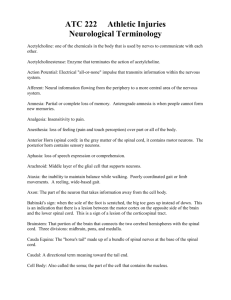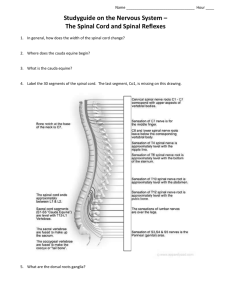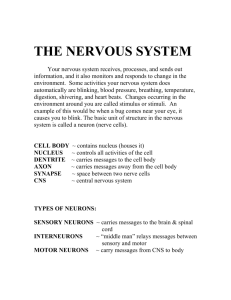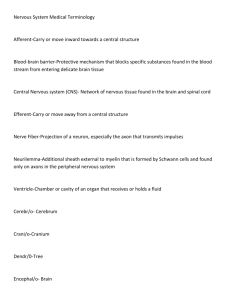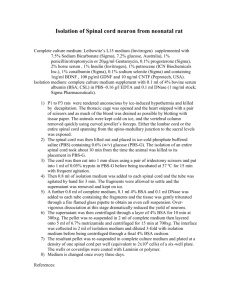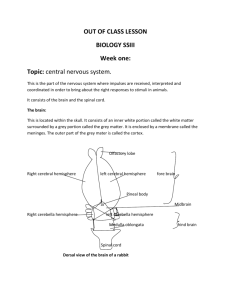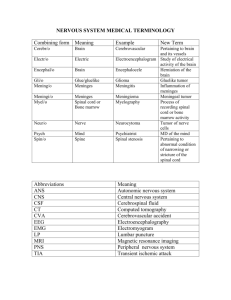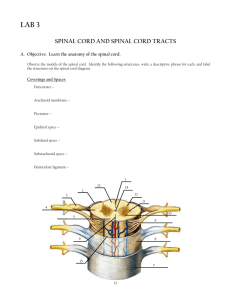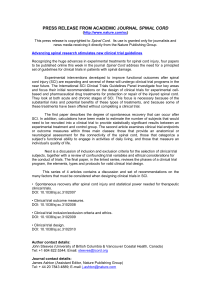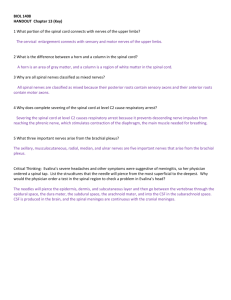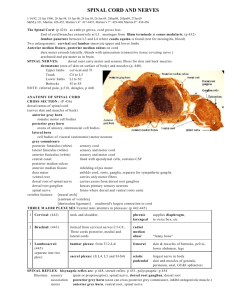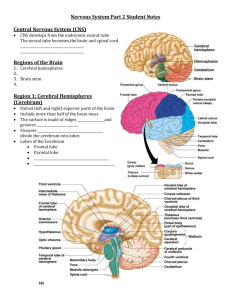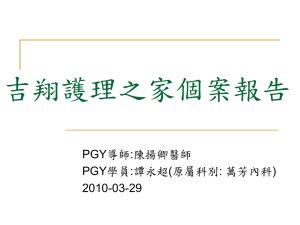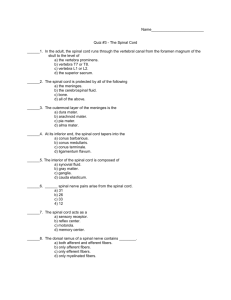CNS Brain Spinal Cord
advertisement
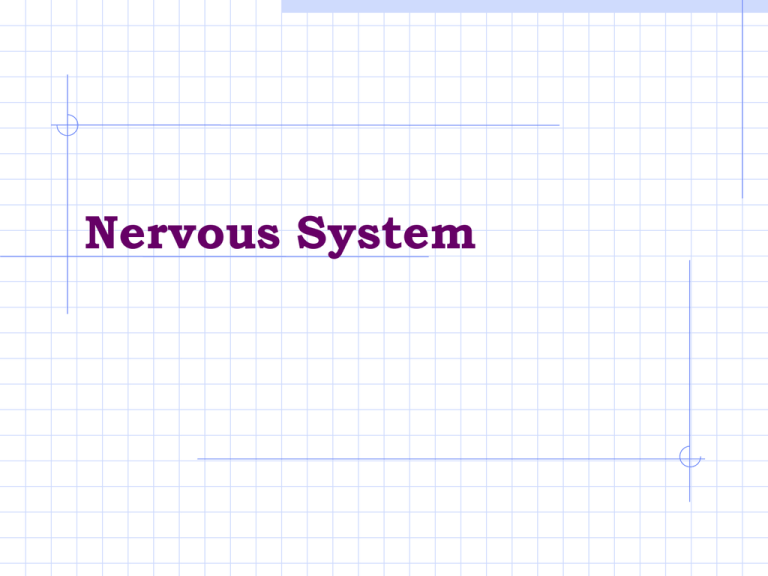
Nervous System Organs & Divisions Central Nervous System: CNS=brain and spinal cord Peripheral Nervous System: PNS= all nerves Autonomic Nervous System: ANS=automatic responses Central Nervous System Brain & Spinal Cord Divisions of the Brain Brainstem: Medulla Oblongata, Pons, Midbrain Cerebellum Diencephalon: Hypothalmus, Thalmus Cerebrum Brainstem: Lies just above the spinal cord in the following order: Medulla oblangata:cardiac, respiratory and vasomotor control Pons: influences respirations Midbrain: relay for visual and auditory impulses Brain…labeled Diencephalon Thalmus: responsible for sensations, associates sensations with emotions,(pleasantness, unpleasantness), and arousal or alerting mechanism Hypothalmus:helps regulate hormones, body temperature, water balance, sleep cycles, control of appetite and many emotions involved in fear, anger, pleasure, sexual arousal and pain. Controls vital functions: heartbeat, constriction & dilation of blood vessels, and contractions of stomach & intestines Cerebellum Produces smooth coordinated movements, maintain equillibrium, and sustain normal postures Cerebrum Largest portion of the brain, Convolutions(ridges) called gyri. Grooves called sulci. Deep sulci are called fissures. Divided into 4 major lobes: Frontal, Parietal, Temporal, Occipital Subdivided according to function. Spinal Cord Lies in the vertebral foramen of the vertebra. Extends from the occipital bone to just above the 4th lumbar vertebrae. Provides 2 way conduction paths to and from the brain. CNS ACTUAL HUMAN CNS PNS Spinal Cord Reflexes: jerk reflexes and withdrawal Sends impulses to the brain. Sensory impulses travel up to the brain in ascending tracts, and motor impulses travel down the cord in descending tracts. Injury to the cord transversely results in loss of function, therefore particular anatomical functions are lost. Ex: paralysis. Cross Section Spinal cord Cervical Section of Spinal cord Lumbar section of Spinal cord The Meninges Tough fluid containing membrane Spinal meninges form a tubelike covering around the spinal cord and line the vertebral foramen. 3 layer: Innermost: Pia Mater; Middle layer: Arachnoid; Outermost: Dura Mater Meningitis=infection or inflammation Bacterial vs. Viral/Aseptic Bacterial: most commonly caused by Neisseria meningitidis (meningococcus), Streptococcus pneumoniae, or Haemophilis influenzae Treatable with antibiotics Viral/Aseptic: various causes, no specific treatment: usually resolves in 10 days:less deadly www.cdc.gov Meningitis S/S: severe headache, nucal rigidity, (neck stiffness) Fever, vomiting *SEEK MEDICAL HELP IMMEDIATELY* Can be mild and self limiting, to fatal. Diagnosed by spinal tap Cerebrospinal Fluid (CSF) Flows in between the Pia mater and Arachnoid mater, (Subarachnoid space) as well as ventricles of the brain Formed in the Choroid Plexus. (network of brain capillaries) and in the ventricles of the brain. End H/S 12 Cranial Nerves…Oh Oh Oh To Touch And Feel Very Good Velvet Auburn Hair Mnemonic device to remember….




